This post may contain affiliate links. See our affiliate disclaimer here.
I’ve been living and traveling full-time in an RV since 2016, and one thing I’ve learned is that understanding your rig inside and out makes all the difference. Whether you’re a weekend camper or a full-time RVer, knowing how to handle common RV issues will save you time, money, and a lot of stress. Here are eight crucial things every RVer should know about their rig.
Contents
How to Manually Open Your Slide Out
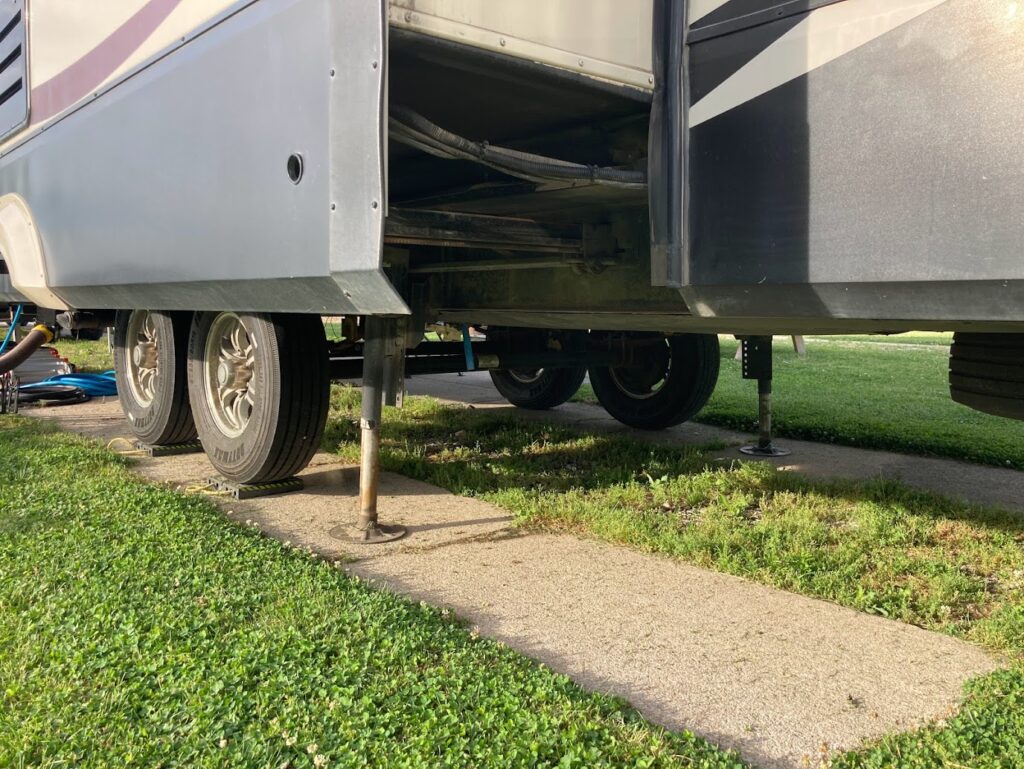
If your RV has a slide out, you need to know how to operate it manually in case of a power failure. Many RVs and travel trailers come with a crank that can be used to extend or retract the slide when the motor fails or the battery dies.
Our fifth wheel (pictured above) came with a crank that could be inserted through a hole in the slide out to manually crank the slide open or closed.
Check your owner’s manual to find out if your RV has a manual slide operation option (not all do). Locate it and learn how to operate it before you need it.
How to Manually Operate Your Jacks
Many electronic leveling jacks also have a manual override that can be used in case of electrical failure. All RV owners with electric jacks should reference their owner’s manual to learn how to access the manual override.
The Exact Height of Your RV
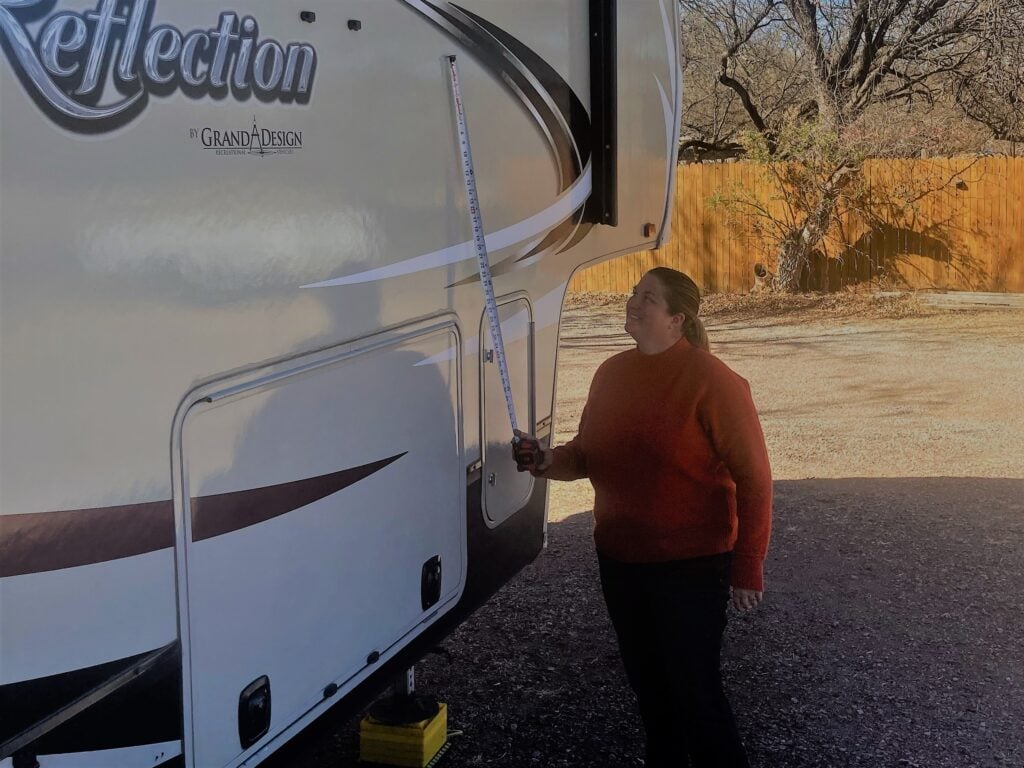
Knowing your RV’s height is essential to avoid clearance disasters. Overpasses, bridges, and even gas station canopies can pose risks if you’re not sure of your vehicle’s exact height. Don’t rely on the manufacturer’s specifications—measure it yourself, especially when hitched if you have a towable RV.
Once you know your RV’s height, enter it into an RV-friendly GPS to ensure you are always routed around low clearance bridges. We use RV Life Pro for our GPS, and our readers can get 25% off their first year of membership using this link (discount automatically applied at checkout).
How Your Slide Out Wires Are Secured
RV slide outs contain electrical wiring for power and, in some cases, gas or water lines for appliances. Different manufacturers secure these wires in different ways, and they can become loose over time. Take photos of the underside of each slide out when you first get your RV. That way, if a wire comes loose or detaches, you’ll know exactly how to reattach it.
The Incoming Water Pressure
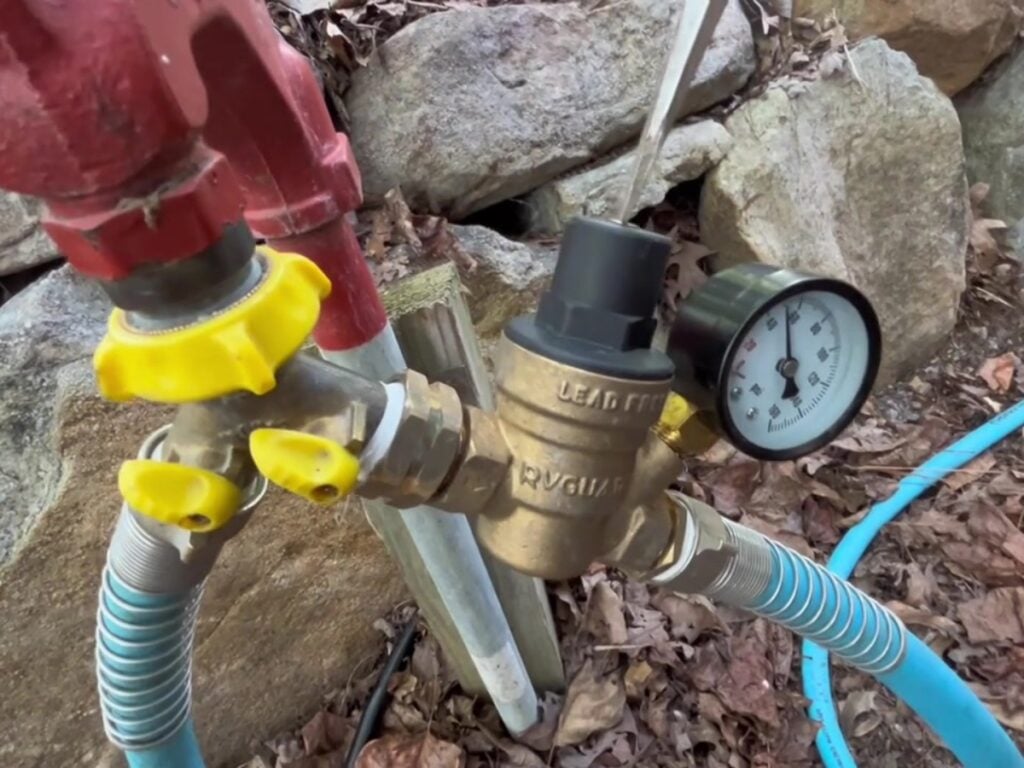
High water pressure can cause leaks, busted lines, and serious water damage. To protect your RV’s plumbing, always use a water pressure regulator. An adjustable regulator allows you to set the PSI between 40 and 50, ensuring that pressure never exceeds 60 PSI. This simple tool can save you from costly repairs.
When Your Water Heater Anode Rod Was Last Replaced
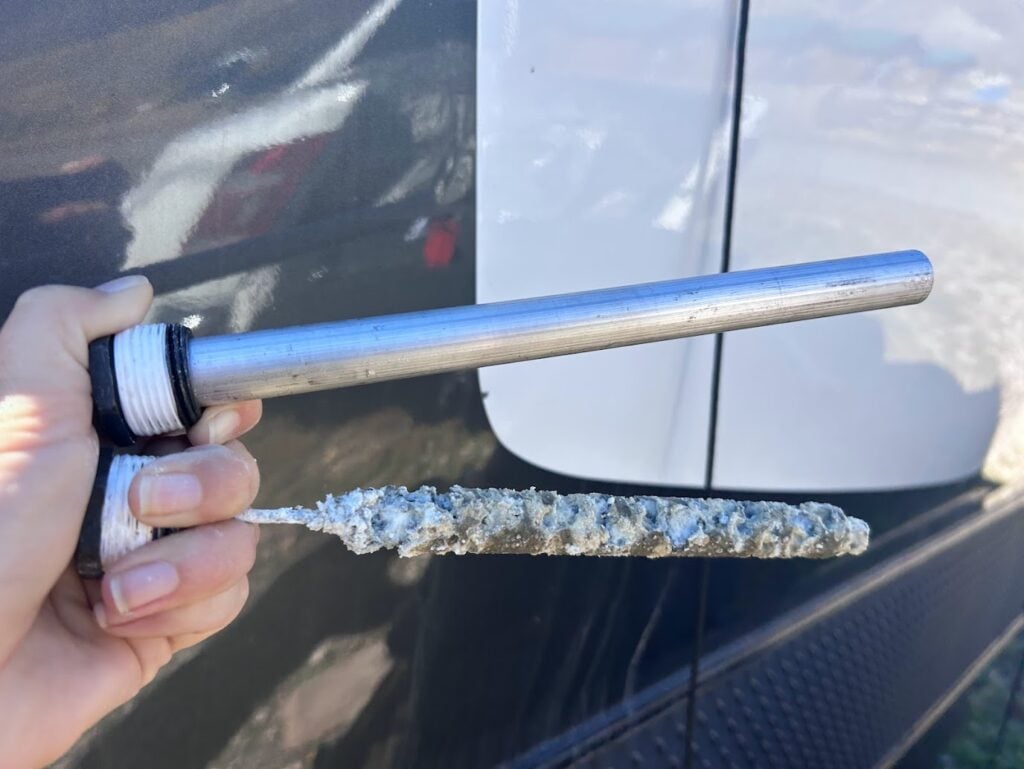
If your RV has a Suburban-brand water heater, it contains an anode rod that helps prevent corrosion inside the hot water tank. This rod attracts corrosive elements, but once it’s 75% corroded, it needs to be replaced. Inspect your anode rod at least once a year and replace it when necessary to extend the life of your water heater.
The Pressure of Your RV’s Tires
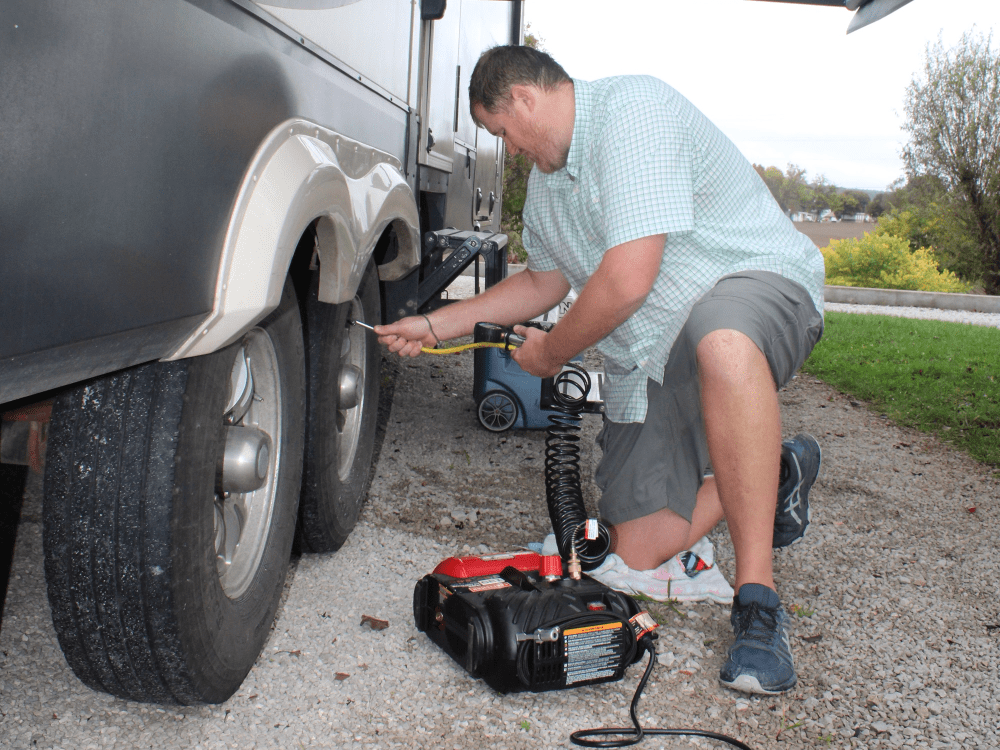
Before every trip, check your RV’s tire pressure to prevent blowouts and unsafe driving conditions. Invest in an air compressor so you can adjust tire pressure as needed, and consider using a tire pressure monitoring system (TPMS) to keep an eye on pressure levels while you drive. This small habit can make a huge difference in your safety on the road.
Propane Tank Recertification Date
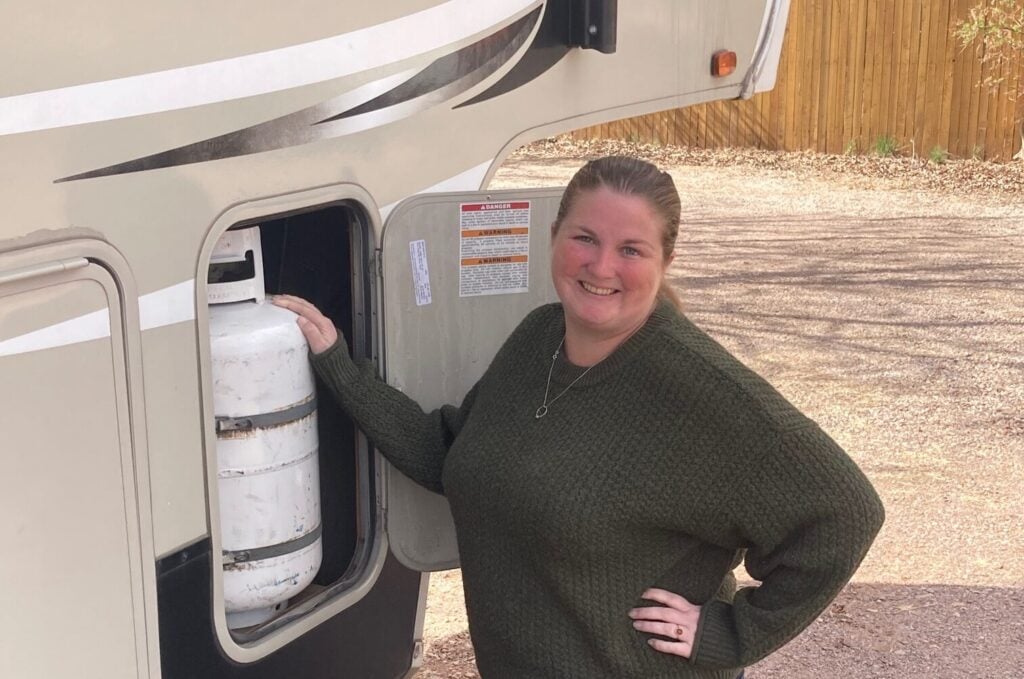
If your travel trailer has portable, refillable propane tanks, they must be recertified after 10 or 12 years from the manufacture date, and then every 5 years after that. The manufacture date is stamped on the neck of the tank. If a tank is not recertified, most places will refuse to refill it, so be sure to stay up to date on recertification requirements.
Want even more RV tips? Check out our guide to 40 More Tips for New RV Owners!
Happy Camping!
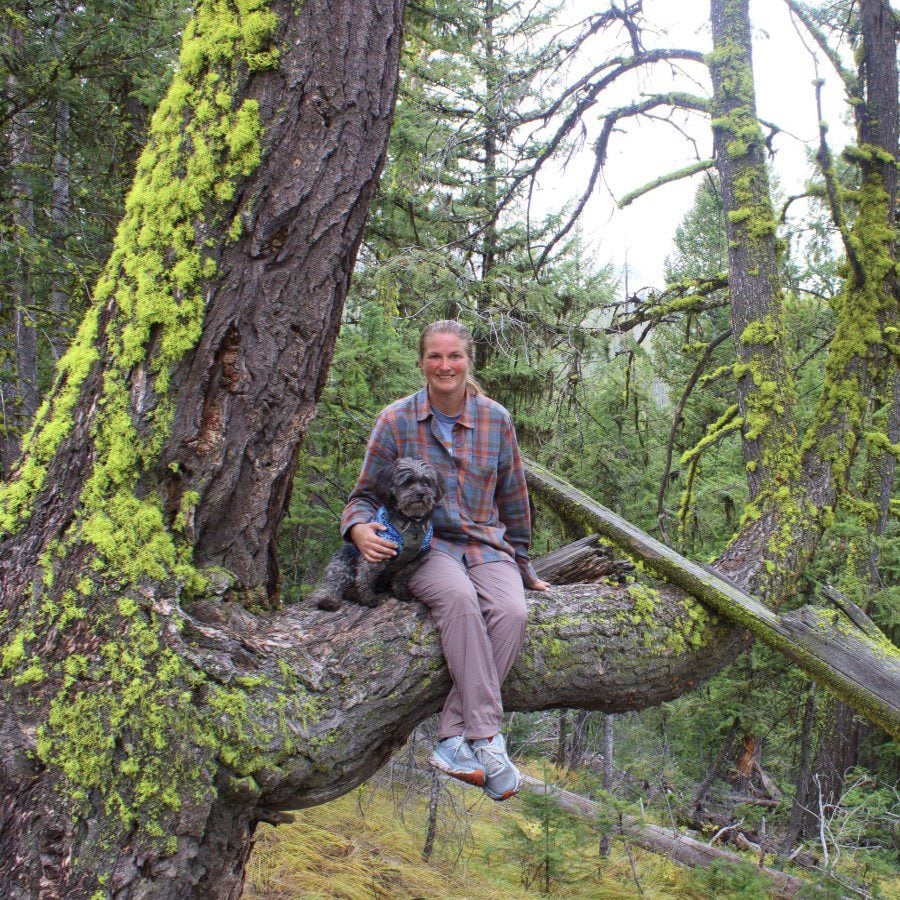
Christina Pate is a seasoned full-time RVer who, along with her husband Justin, has journeyed across the US, Canada, and Mexico. Drawing from her extensive travels, RV repairs and RV renovations, she founded Travels with Ted to guide and inspire fellow RV enthusiasts. Christina is also the co-author of The Owner’s Guide to RV Maintenance and the creator of My RV Log Book.

